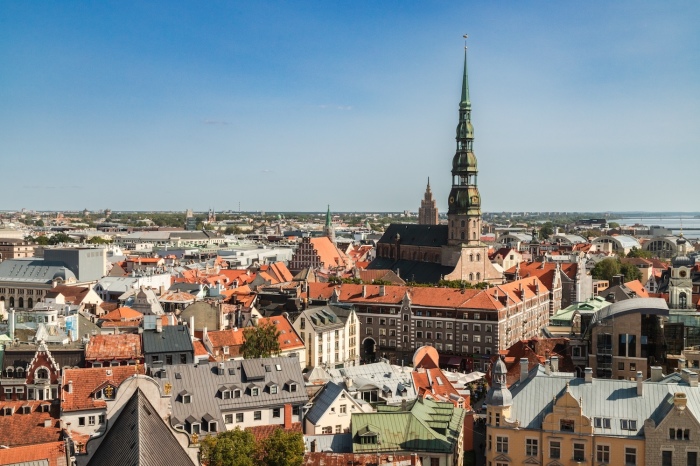Travel: How Crusades and the Reformation Shaped This Overlooked European Capital

A Glimpse into Riga’s Rich History and Cultural Heritage
Riga, the capital of Latvia, is a city that stands as a testament to centuries of history, blending elements of medieval architecture, cultural diversity, and resilience. Nestled along the Daugava River, its skyline is dominated by the spires and pinnacles of old churches, while cobblestone streets are lined with red-brick buildings and pastel-hued facades. These visual elements tell the story of a city shaped by conquest, trade, and religious transformation over the centuries.
Founded in 1201 by Bishop Albert von Buxhoeveden, a German who was both a religious leader and a crusader, Riga played a crucial role in the Christianization of the Baltic region. This area, which includes modern-day Estonia, Latvia, and Lithuania, was one of the last pagan strongholds in Europe. The influence of the Teutonic Knights, who used both faith and force to spread Christianity, left a lasting mark on the region.
Today, this legacy can be seen in the Old Town (Vecriga), where the architectural styles of various eras coexist. From the influence of German crusader knights and Hanseatic League merchants to the rule of Swedish kings, Russian tsars, and Soviet occupiers, the city's history is etched into its streets. Visitors familiar with other Hanseatic cities like Visby in Sweden or Gdansk in Poland will recognize the red-brick aesthetic that defines much of Riga's historic core.
One of the most iconic landmarks in Riga is the Riga Cathedral, known locally as Rigas Doms. Originally built in the 13th century, the cathedral has undergone numerous renovations and reconstructions over the centuries. Its architectural evolution reflects the changing tides of history, from Romanesque beginnings to Gothic arches and Baroque decorations. Despite enduring fires, wars, and the Reformation, the cathedral remains a symbol of resilience.
Once the seat of a Roman Catholic prince-archbishop, the cathedral now serves as the mother church of the Evangelical Lutheran Church of Latvia. This shift in religious affiliation occurred during the 16th century when German-speaking merchants and nobility embraced the Reformation, leading to a distinct Lutheran identity in Latvia, unlike the Orthodox traditions of Russia or the Catholic traditions of Lithuania.
Beyond the cathedral, Riga is home to an impressive collection of Art Nouveau buildings, considered among the finest in Europe. A visit to the Riga Art Nouveau Museum, housed in a restored early 20th-century apartment, offers insight into the refined lifestyle of Riga’s middle class before Soviet occupation. The city's overall elegance often surprises visitors, challenging preconceived notions of a dilapidated post-Soviet city.
Exploring Riga: Tips for Travelers
For those planning a trip to Riga, it’s important to note that there are no nonstop flights from the United States. Most travelers will need to connect through European hubs. Air Baltic, the national airline and a partner of Delta Air Lines, is a reliable option for reaching the city.
Accommodation options range from budget-friendly to luxury. The Marriott AC Hotel is a convenient choice located near major attractions, while the five-star Grand Hotel Kempinski offers a more upscale experience. For a more personalized stay, Hotel Gutenbergs, a family-run hotel opposite Riga Cathedral, provides comfortable rooms and a rooftop restaurant with panoramic views of the Old Town.
The Riga Cathedral is open to visitors from 10 a.m. to 5 p.m. Monday through Saturday and 2 to 5 p.m. on Sundays. Admission is modest, and highlights include a 12th-century granite baptismal font that has been used for over 800 years. Visitors can also climb the 217 steps to the top of the cathedral tower for a breathtaking view of the city.
Nearby, the Dom Museum in the medieval cloister showcases artifacts from the cathedral’s history, though many exhibits lack detailed information. Another recommended museum is the Museum of the History of Riga and Navigation, which features English language signage and traditional displays.
In addition to the Riga Cathedral, the city is home to two other notable cathedrals: the Roman Catholic Cathedral of St. James and the Russian Orthodox Nativity of Christ Cathedral. Each tells its own story of religious and political shifts throughout the centuries.
Getting around Riga is easy, as most attractions are within walking distance. For longer trips, ride-hailing apps like Bolt offer a convenient alternative to taxis. Rental cars are only necessary for day trips, such as visiting Cesis Castle, a 13th-century fortress, or Rundāle Palace, a Baroque summer residence featuring opulent design and extensive gardens.
Riga is more than just a historical city—it is a living example of resilience, where culture and faith have endured despite centuries of adversity. Whether exploring its ancient architecture or enjoying the charm of its streets, visitors will find a city that offers a unique blend of Old World elegance and modern vitality.
Post a Comment for "Travel: How Crusades and the Reformation Shaped This Overlooked European Capital"
Post a Comment